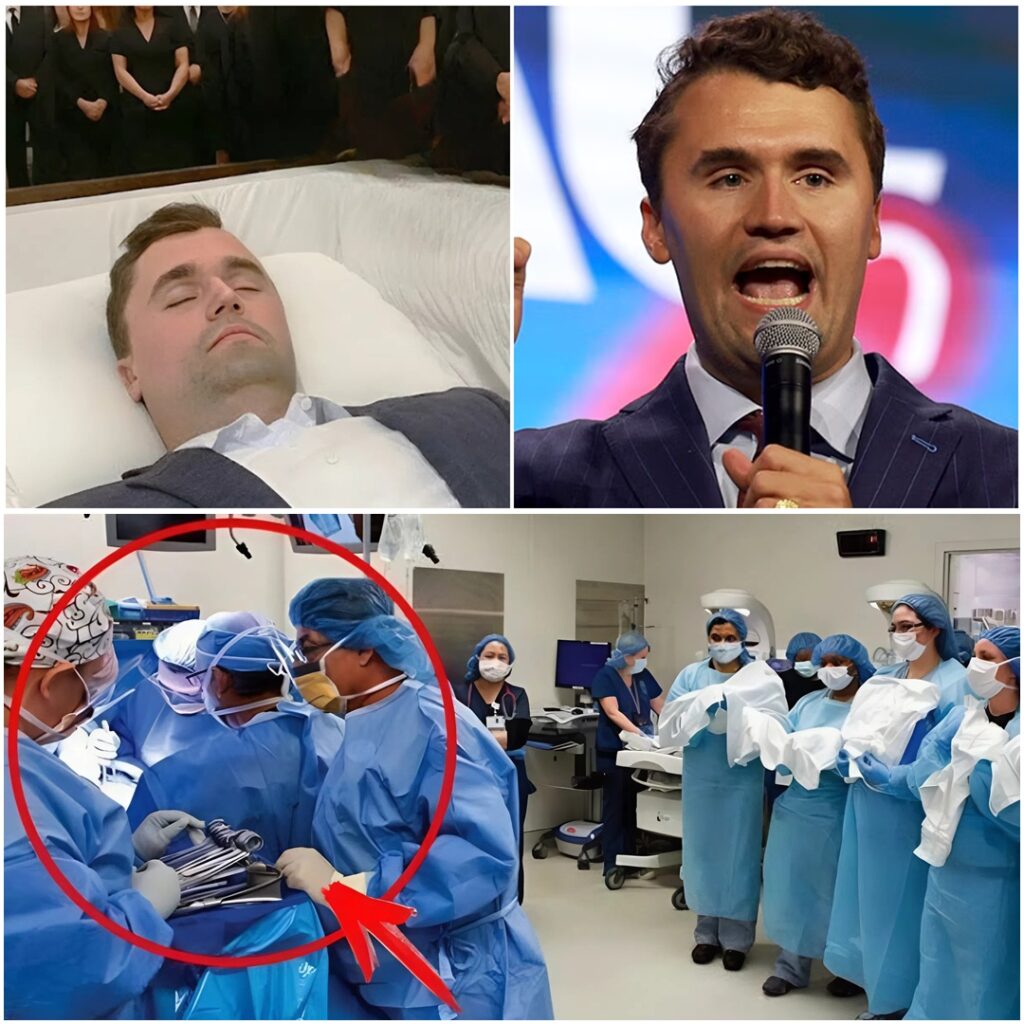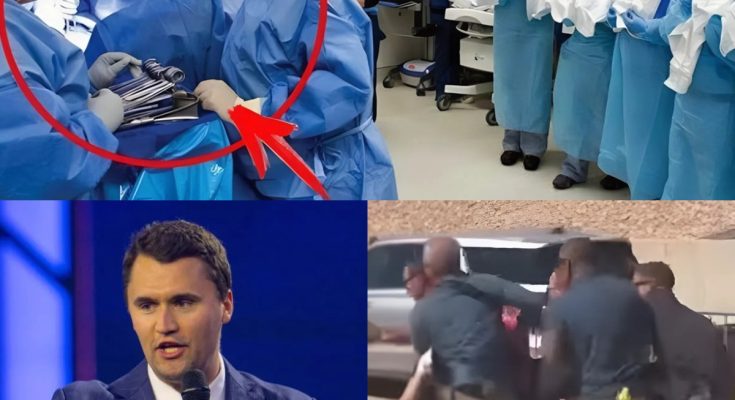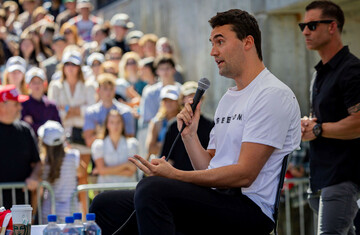For weeks, the story of Charlie Kirk’s sudden death has been wrapped in mystery. Official statements painted it as tragic but ordinary. No foul play, no unanswered questions—just another life lost too soon. Yet behind the calm headlines, whispers persisted: something about the way his final hours were handled didn’t add up.
Now, the whispers have become a roar. A doctor, defying every risk to their reputation and livelihood, has leaked footage from inside the emergency room where Charlie Kirk spent his last moments. The video, raw and unfiltered, reveals a haunting scene that authorities never wanted the public to see.
The recording shows the familiar chaos of an ER—rushed voices, flashing monitors, the hum of machines straining to keep a body alive. Yet amid the frenzy, there is a moment of chilling clarity. Kirk, pale and fading, appears to gather his final strength not just to cling to life, but to convey something. A message. A warning. Something that, until now, has been suppressed.
Witnesses describe the atmosphere as unlike anything they had seen before. “It wasn’t just a man dying,” one insider recounted. “It was as if he knew something and was desperate to say it before the silence took him.”

The video does not provide a clean explanation, but it raises unnerving questions. Why was such footage hidden? Why did it take a whistleblowing doctor, risking their entire career, to ensure the world saw it? And why, in Kirk’s final moments, did he appear so intent on communicating something larger than himself?
Almost immediately after its release, the footage began disappearing from platforms. Social media posts were flagged, links broken, accounts silenced. Supporters called it proof of a cover-up, arguing that if there were nothing to hide, the clip would have been public from the start. Critics, meanwhile, admitted uneasily that the footage is hard to dismiss, no matter their politics.
The impact of the leak has been seismic. Millions who once wrote off the speculation now find themselves replaying the video, analyzing every flicker of his expression, every attempted gesture. What was he trying to say? Was it fear, revelation, or an accusation? The ambiguity only fuels the fire, leaving the public to fill in the blanks with growing suspicion.

Commentators are now framing the leak as bigger than one man’s death. They argue it has exposed the fragility of trust in institutions. If a high-profile figure like Charlie Kirk can die under mysterious circumstances and have his final moments sealed from view, what does that say about transparency, accountability, and truth itself?
The doctor who leaked the footage has yet to be identified, but their act is already being hailed as courageous. In a statement circulated through anonymous channels, they wrote: “The public deserves to see. They deserve to know. This was not just a medical event—it was history, and history should not be hidden.”
Whether you believe in conspiracy or coincidence, the footage has left an indelible mark. It strips away the distance between headlines and humanity, showing the frailty of a man who, in his last seconds, refused to go quietly. It forces us to confront uncomfortable questions about what is hidden from view—and who gets to decide what the world sees.
The truth of Charlie Kirk’s death may never be fully known. But with this leak, one thing is undeniable: the silence has been broken. His final moments, once locked away in secrecy, are now part of the public record. And in that raw, unsettling glimpse, many see not just a death, but the spark of a deeper reckoning.
For now, the video remains more question than answer. But in those last haunting seconds, one fact is clear: Charlie Kirk was trying to tell us something. And the world is finally listening.




